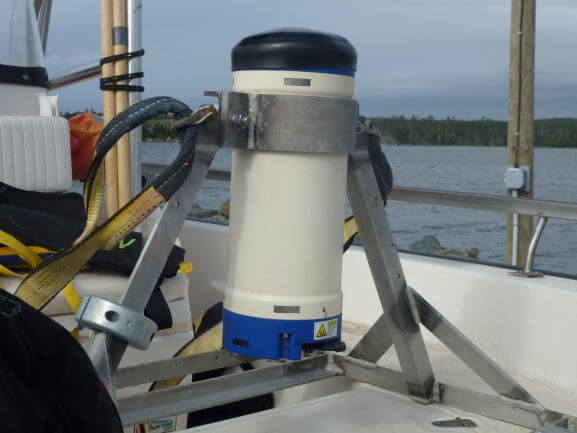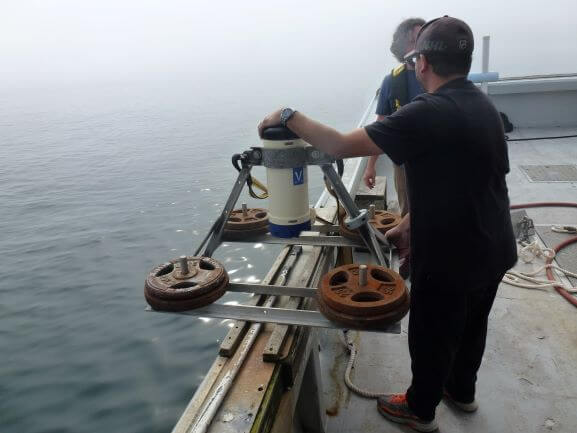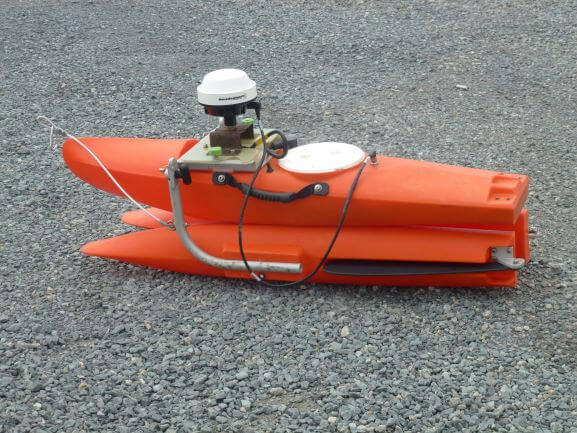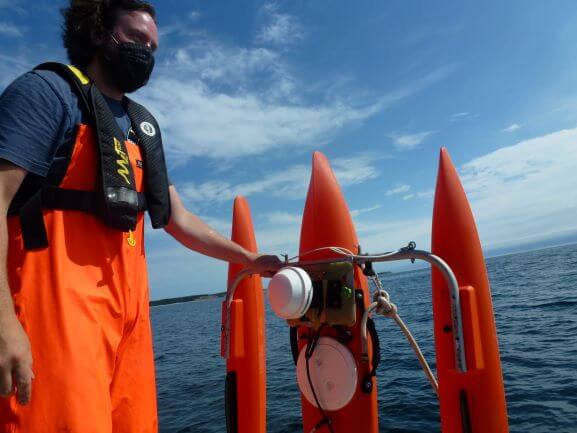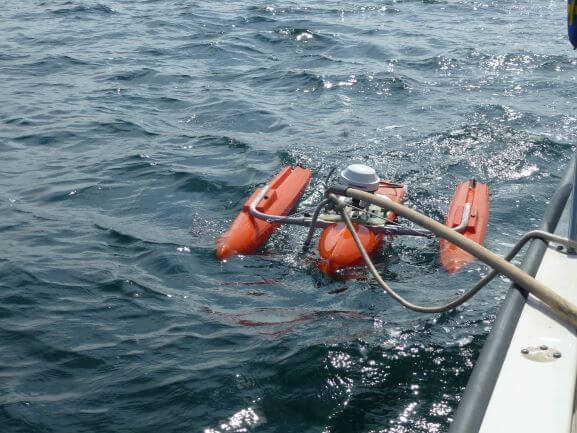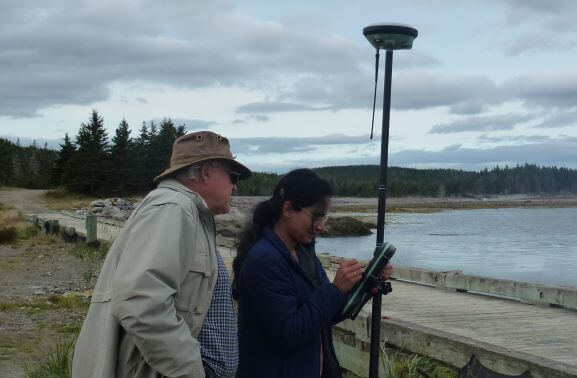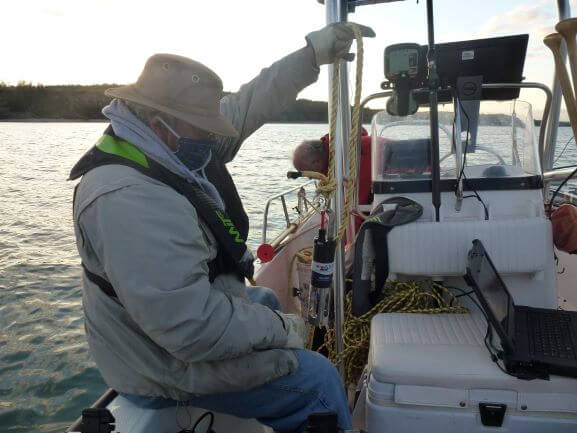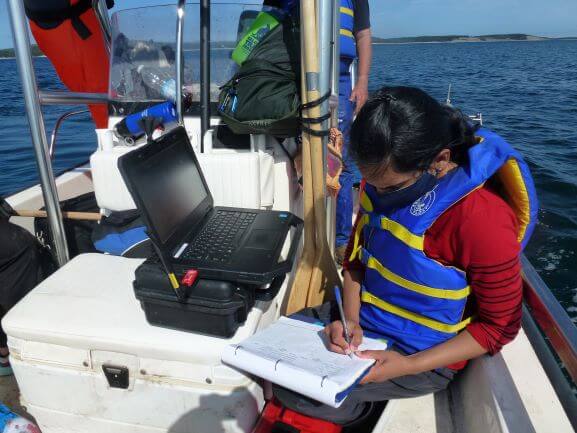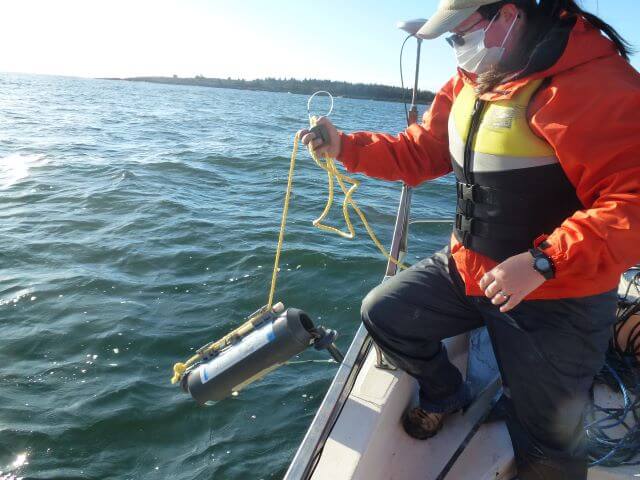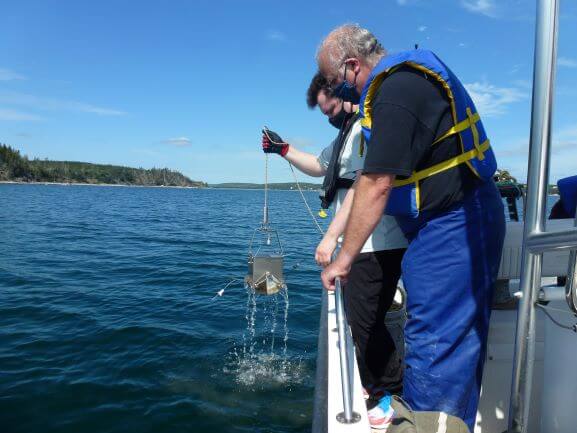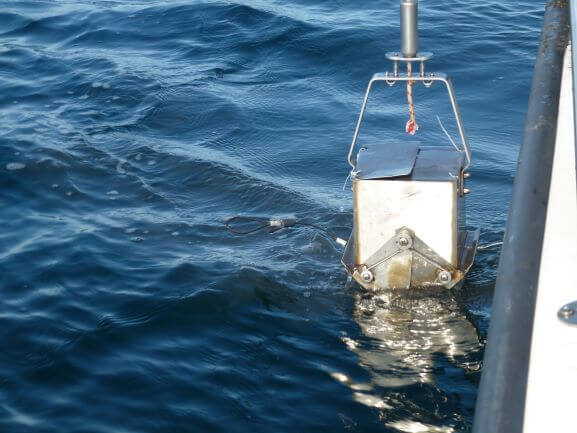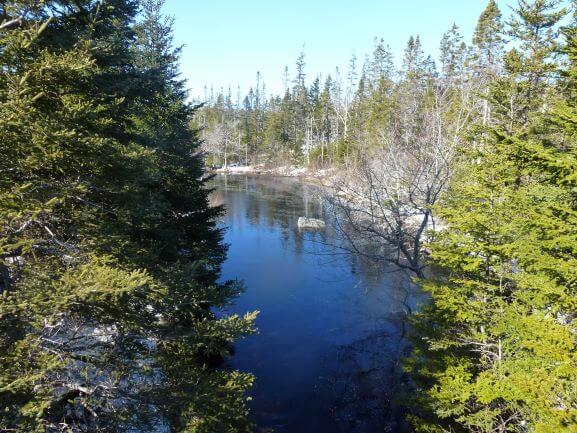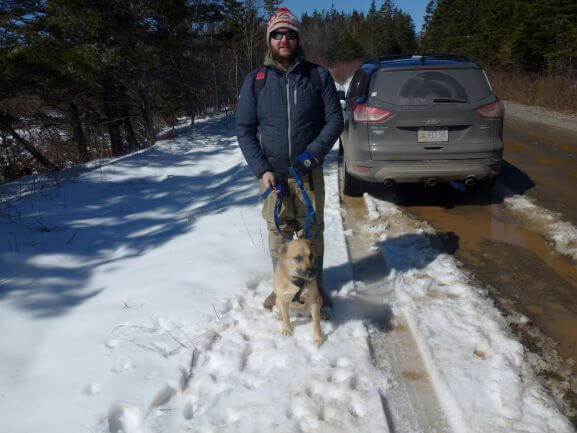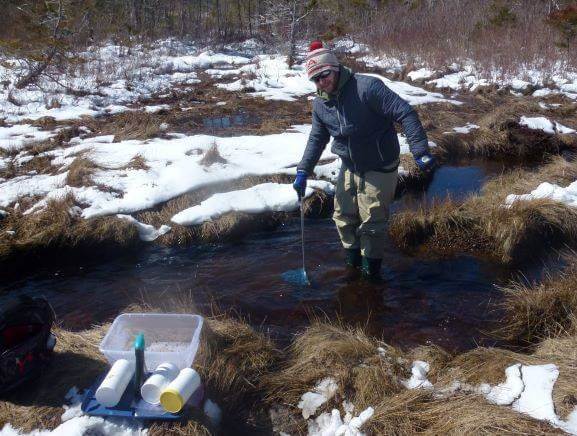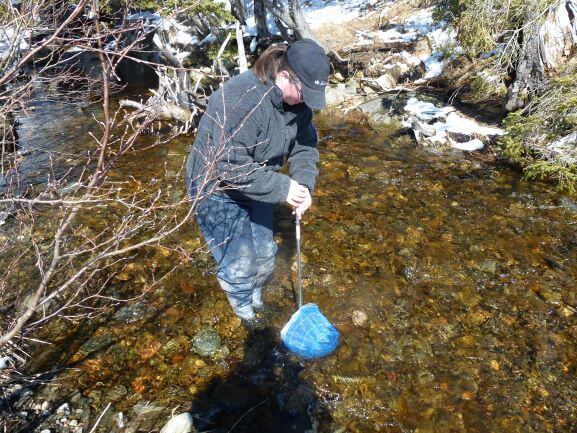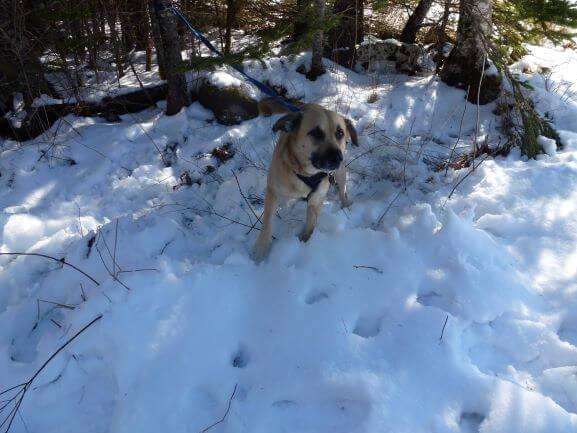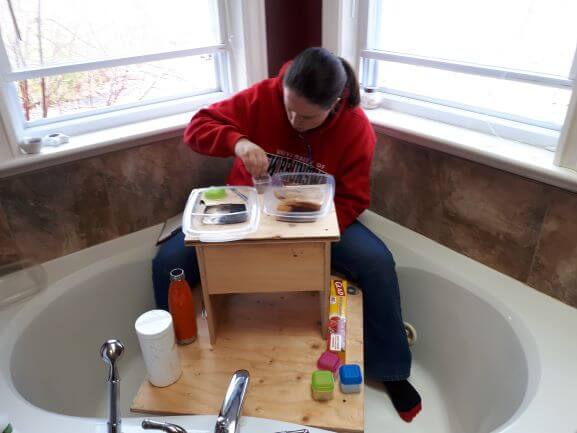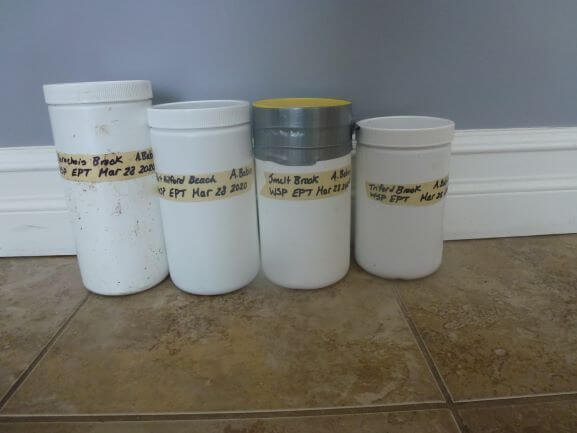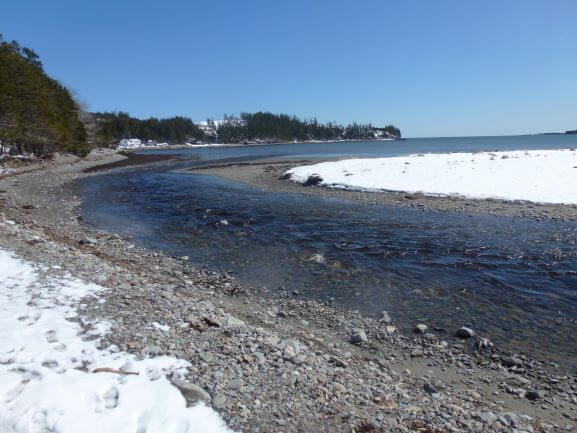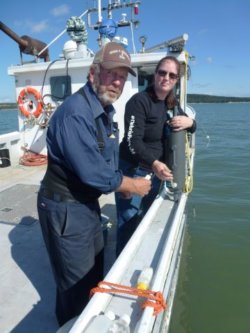
Much of the work on the water is conducted aboard the boat of our friend and local fisherman Hughie MacDonald, seen here with our environmental analyst Amanda Babin.
When we talk about the creation of the whale sanctuary in Port Hilford, Nova Scotia, we regularly explain that we’re currently in the site development stage and that this includes “on-site environmental data collection.”
So, what kinds of environmental data do we need to collect? And what do we use it for?
To ensure that the sanctuary can provide the quality of life that the whales deserve, we need to know as much as possible about the bay, the freshwater inlets and ponds nearby, and of the lands surrounding the bay. The results of the data analyses will be included our permitting submissions and will inform our engineering studies for construction of the sanctuary. Some of the things we have to understand are:
- the ranges of water temperature;
- whether there is runoff from the shore during storms and if it contains any detrimental pollution;
- details about currents, tides and wave action and how these change during storms;
- whether there are any underwater sounds that might disturb or alter whale behavior;
- and what other kinds of animals live in and around the bay.
Our Environmental Analyst Amanda Babin has been conducting much of this work and taking photos and videos as she goes. So, in this post she takes us through some of the activities and equipment that the team has been using to gather all of this information.
Acoustic Doppler Current Profiler
Acoustic Doppler Current Profilers (ADCPs) tell us how fast the water moves and in what direction at different depths. We use two kinds: The blue-and-white one is deployed on a frame with weights so that it can sit on the bottom of the bay. The other is mounted on an orange float that looks a bit like the space shuttle and is deployed on the surface.
Multibeam Sonar
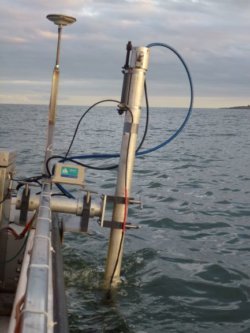 We’re doing a multibeam sonar survey to make a detailed picture of the seafloor, which will show us areas that are shallow and deep. The survey will also identify any anomalies in the sea floor and tell us whether there could be a sunken boat (or even an old car that may have been dumped into the bay!).
We’re doing a multibeam sonar survey to make a detailed picture of the seafloor, which will show us areas that are shallow and deep. The survey will also identify any anomalies in the sea floor and tell us whether there could be a sunken boat (or even an old car that may have been dumped into the bay!).
Once we know the detailed shape of the sea floor, we can add the ADCP data and create a hydrodynamic model of Port Hilford. This will give us a dynamic picture of how water moves around the bay, which is critically important for engineering the placement of the sanctuary net enclosure, as well as for understanding how the whales can interact with their environment.
The team that worked on collecting the data includes the Applied Geomatics Research Group of the Centre of Geographic Sciences of the Nova Scotia Community College. It was led by Dr. Tim Webster, and included Sean Dzafovic, Nathan Crowell, Dedipya Kodavati, and Connor Dearing.
Hydrophones and Underwater Microphones
Whales are acoustic animals and their primary sense is sound, so we want to know whether the sounds of boats or any other noise will have an impact on their hearing frequencies. Having an overall acoustic profile of the environment will help us understand how the whales will react in their new home.
Hydrophones and microphones record noise to measure the volume at each frequency and tell us how quiet or loud it is underwater. Here’s a typical hydrophone, along with what one of the spectrograms looks like. (Spectrograms are a picture of the volume of the sound at different frequencies over time.)


In this video, we’re collecting a hydrophone that’s been measuring underwater noise.
A hydrodynamic model creates a picture of water speed and direction at different depths. This will help us understand what the whales will experience. It will calculate how quickly water moves in and out of the area to understand how debris and whale waste will move in the marine environment. And it helps with sanctuary design.
Benthic Surveys
Benthic animals are those who live in or on the seafloor, and benthic surveys are one of the main ways that scientists assess the health of our estuaries and coastal waters.
In this video, Connor Dearing and Dedipya Kodavati are lowering a photo drop frame to the seafloor so that we can take GoPro video to identify the substrate type and any flora and fauna that are present.
Water and Sediment Sampling
With water samples taken at a variety of locations in the bay, we are doing lab analyses for around 30 different metals and we’re measuring nutrient levels to test for any contaminants in the water.
Freshwater Survey
During the snow melt, we identified and measured all of the major freshwater sources that enter the bay, including their depth at high water, their width, and the water speed. This allows us to understand how much freshwater is entering the bay.
We collected water samples, and samples of invertebrates living in the streams. We then identified the species and calculated what percentage were sensitive to water pollution. These percentages were above 70 percent, which is quite high, indicating that the streams were clean.
Much of this work was conducted by our environmental analyst Amanda Babin, her husband Kraig, and their dog Kes.
Storms
Photos and videos like this one, taken as Hurricane Teddy arrived in Port Hilford, show us whether debris comes ashore and whether there are particular locations where more or less debris accumulates. This helps us plan our operations for all types of weather events.
This video was taken by Jamie Anderson from our standardized location for taking photos and videos along the western shore. The video is time-matched to the data from the ADCP to relate how high the waves actually were to our perception of the wave heights from shore.
